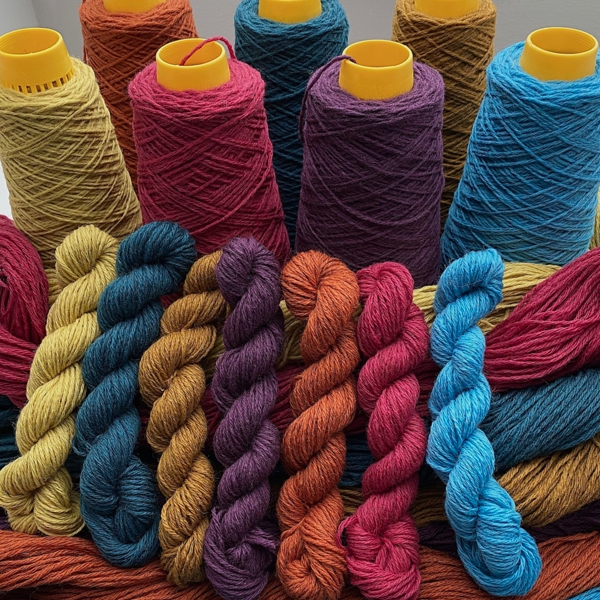
Shorelines and Strata
The rich geological features of Dorset and Skye inspired TJFrog's wool label, Shorelines & Strata, celebrating their linkage through both the geology and the famous Dorset and Hebridean sheep breeds that have long shaped the downland landscape in Dorset and the wilder open headlands and moorlands found on Skye.
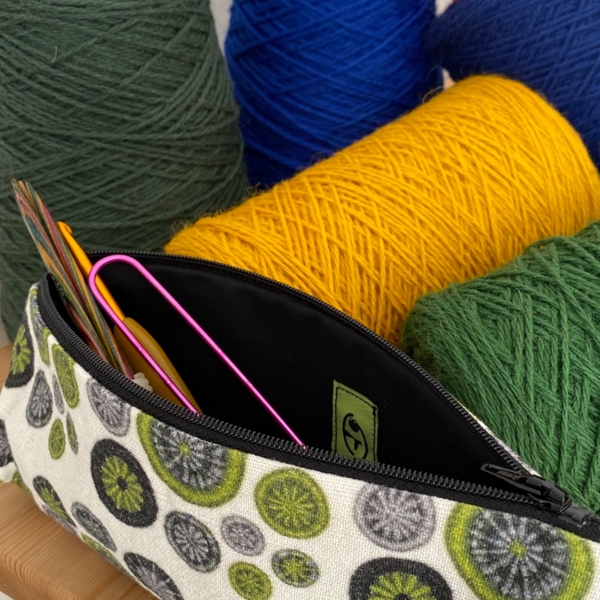
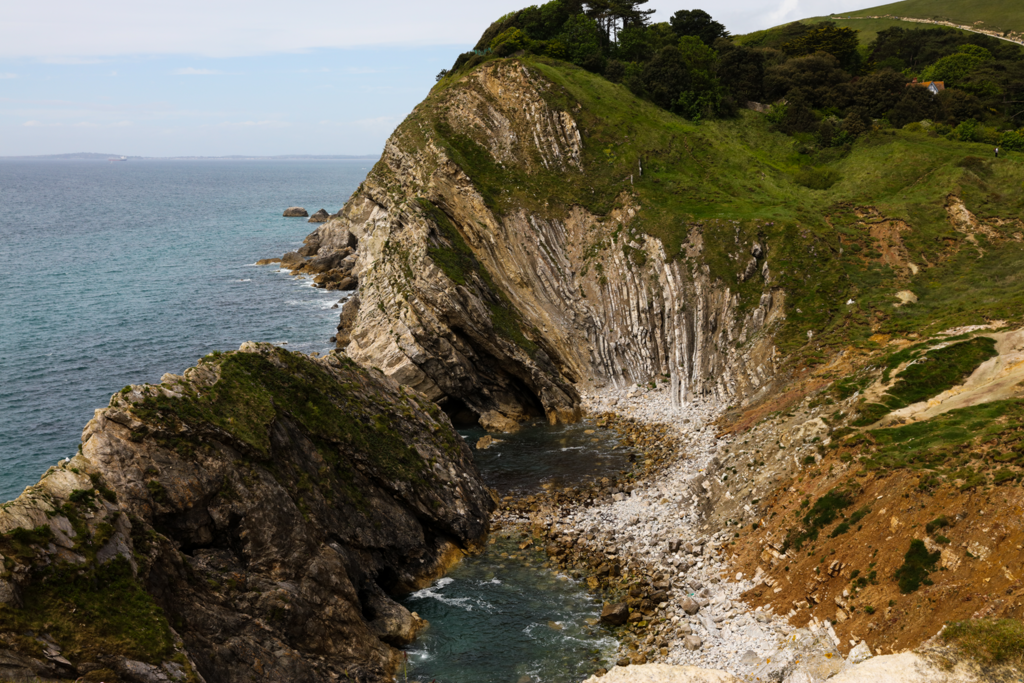
Dorset - Downland and the Jurasic Coast
Perhaps most famous for it's World Heritage, Jurassic Coast, Dorset is an exciting mix of chalk and limestone scarps rolling downland and lush pasture where rivers meader and ancient woodland breaks up open heathland. In the North of the country dry valley's are a feature of the chalk plain, whilst on the Isle of Purbeck huge earth movements have given rise to the near vertical rock formation of Durdle Door and Lulworth Cove. Portland is the southern part of an anticline that gives rise to the East West valleys whilst further North, as the limestone gives way to rolling chalkland the downs break up two areas of tertiary sands and gravels.

Rare Breed and Lush Grazing on Rolling Hills
TJFrog uses four different Dorset breeds to source her wool, three of them on the Rare Breed Survival Trust's watch list. Most at risk is the Portland which is representative of the tan faced sheep that has been around since Roman times. These tan faces were crossed with Merino to breed the Dorset Horn. The third sheep on the Watchlist is the Dorset Down which like many downland sheep came under pressure from imported Texels and Suffolk sheep. The Dorset Horn was also used to produce the fourth breed used by TJFrog in the Shorelines and Strata brand. It was the Australians who crossed the Dorset Horn with Ryeland and Corriedales to produce the Poll Dorset, famed for its spongy short-stapled wool.

Skye - A geological wonder of old and new
Skye's landscape is dominated by the influence of volcanos. At its centre the jagged peaks of the Black Cullin and Blá Bheinn form an imposing ridgeline that defines the island. Sweeping North the lava flows, mainly basalt, cover much of the island. However on it's North East coast older Mesozoic rocks are exposed. Not only do these form the backbone of the distinctive Trotternish pennisular but they also include the sandstones and shale formations from the Jurassic period and a link to the South Coast of Dorset. To the South of the Cuillin, on the Sleat pennisular, is found rock from the Precambrian period. The gneisses, of the Lewisian complex, are some of the oldest rocks in the United Kingdom. Over the years they have been repeatedly folded which forms the distinctive landscape seen today.
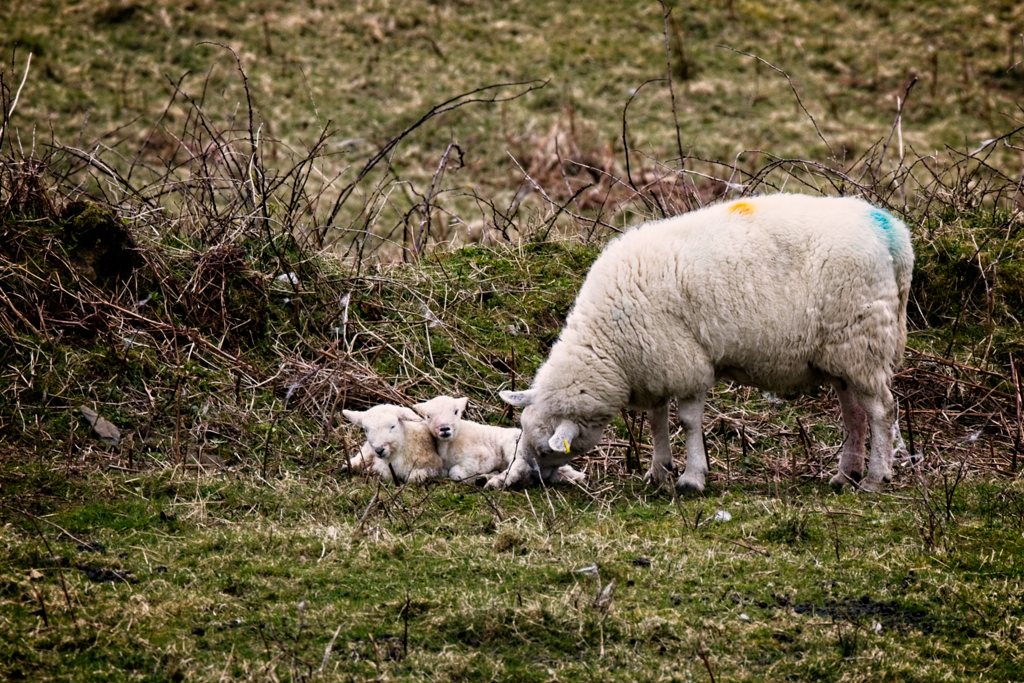
Hardy Sheep amongst the Heather and Bracken
Travelling through Skye the most common breeds of sheep you will see are the Scottish Blackface and Cheviot. However a number of the crofters do raise the smaller Hebridean and there are also a number of Shetland sheep for those with a keen eye. The cheviot is a dual breed reared for both meet and its fleece. The cheviots used for Shorelines and Strata are all from Aird, on Skye, literally just over the fence from TJFrog. The other breed used are Hebrideans which are sourced from the North of the island on Croft 29. The Hebridean is one of the smaller, primitive breeds of sheep, which were once common throughout Northern Europe and is native to Scotland.
The Sheep
Portland (Rare Breed) - Stone
Click to go to TJFrog Portland Yarn
Dorset Horn (Rare Breed) - Shell
Click to go to TJFrog Dorset Horn Yarn
Dorset Down (Rare Breed) - Chalk
Click to go to TJFrog Dorset Down 4-Plies Yarn
Click to go to TJFrog Dorset Down 3-Plies Yarn
Poll Dorset - Limestone & Calcite
The Poll Dorset is a hornless (polled) version of the Dorset Horn and was first developed as a breed in Australia from the late 1930s through to the mid 50s; when it was intriduced to the United Kingdom. It is a different breed to the ‘Polled Dorset’ bred in California. The Poll Dorset is a mdeium sized sheep with a lean body that produces dense white wool with a short staple length. They grow quickly which makes them popular for farmers looking to meat production.
Like other similar breeds the Poll Dorset has a downs based fleece which gives the wool a springiness and a density which makes it both comfortable and hard wearing. Often used in the bedding and car making industries Poll Dorset is also used in carpet making.
Click to go to TJFrog Poll Dorset Yarn
Click to go to TJFrog Poll Dorset / Hebridean Mix Yarn
Hebridean - Limestone
Click to go to TJFrog Poll Dorset / Hebridean Mix Yarn
Cheviot - Gneiss
Click to go to TJFrog Cheviot Yarn
The Fleeces
Built originally in the 1600s Rampisham Hill Farm, run by David and Ruth Wilkins, pride themselves in producing pedigree Dorset Down stock in their native downland environment. Their Dorset Down flock consists of about 80 breeding ewes, which they breed from annually in March. The Dorset Downs are a docile breed, well-suited to living outside and grazing on species-rich and low-input downland pastures, producing fast-finishing and good-conformation lambs off grass alone.
David and Ruth also provide TJFrog with Poll Dorset fleeces.
Croft 29 is a tradional croft on Skye’s Trotternish peninsula, owned and run by Stephen and Rachel Varwell and their family since 2005. They have a small flock of Hebridean sheep along with a few Dexter Cattle. TJFrog uses fleeces from younger sheep which, with the Hebridean breed, is darker and softer though Stephen and Rachel have found that the older fleeces are very useful for making their own tweed guage yarns.
Naming
Each type or yarn, whether single breed or mixed is name after rock or strata that forms the distinctive geology of both Skye and Dorset. Within this family name each colourway is then named after the colours found in the surrounding environment. There are currently six different yarns to choose from:
- Limestone – the original yarn – Hebridean (15%) & Poll Dorset (85%) Mix – DK & 4 Ply
- Stone – single breed Portland (Rare Breed) – DK
- Shell – single breed Dorset Horn (Rare Breed) – Light DK
- Chalk – single breed Dorset Down (Rare Breed) – DK & Aran
- Calcite – single breed Poll Dorset – DK
- Gneiss – single breed Cheviot – 4 Ply semi-worsted
